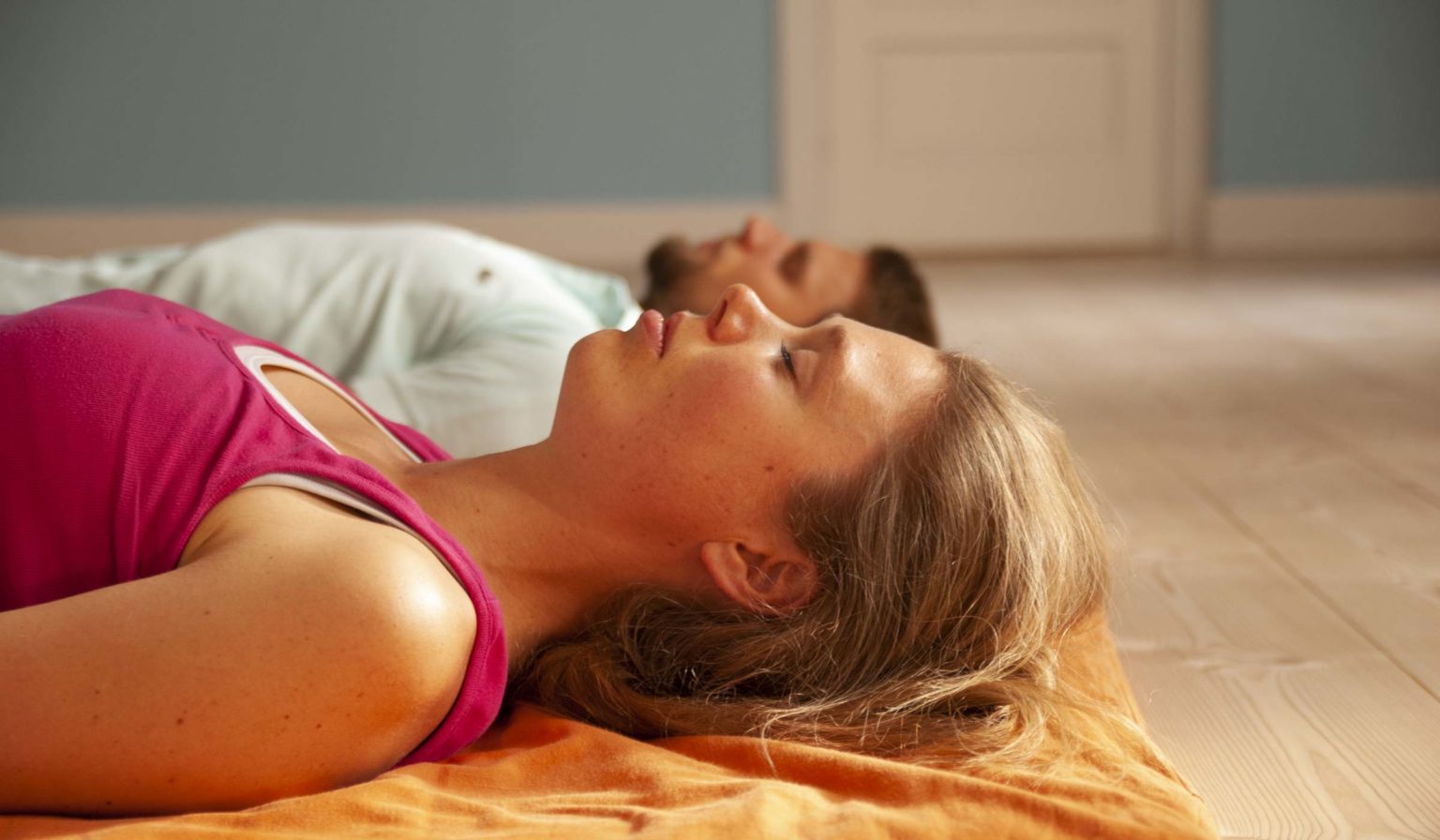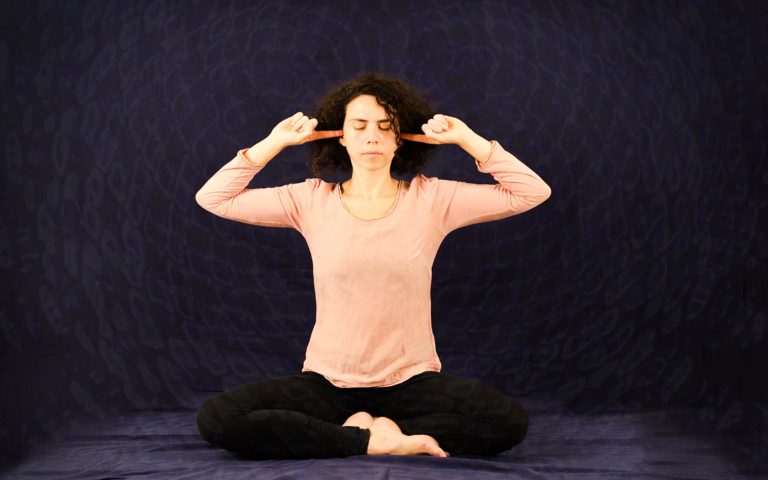Shavasana is crucial. Yet, many yoga practitioners never get it right because their approach to yoga is too physical, and they never get the proper guidance. This article will explain how you can get more out of lying still and how Shavasana could be the one pose to help you move towards a more profound practice.
What Shavasana means
The name Shavasana is Sanskrit, and it means corpse pose. Some people call it the dead body pose or the dead man pose. My teacher, Swami Janakananda, preferred to call it the “dead still” pose. I find that name to be the most appealing one. It is also the one that best captures its purpose.
The most important yoga pose
If someone asked me which yoga pose is the most important, I would say that it is Shavasana. I asked ten other experienced yoga teachers to find out if they were with me on this. The dead still pose came out as the clear favourite.
I think this pose deserves that first place above all because it regulates the effects of other yoga poses. Moreover, it teaches you to relax in depth.
Shavasana is easy
The corpse pose is easy to do. You lie down on your back and remain still; that’s it. Yet, quite a few yoga influencers out there will depict it as tricky. The supposed reason is that you would have to struggle with restlessness and mind wandering. I have great news for those who find Shavasana challenging: There is a lot more about yoga left for you to discover here!
Learning stillness
All you need to appreciate being still is some basic knowledge of how your mind works. And by inserting Shavasana at the right moments in your asana sequences, that knowledge comes quite naturally. But this is where many modern yoga styles are lacking. A basic understanding of meditation is absent, and consequently, physical yoga practice stays superficial.
On the other hand, if you approach yoga in a meditative way, the situation is different. Then you encourage a passive attitude towards thoughts and restlessness. By doing that, moments of total immobility become natural and pleasant.
Once you can comfortably remain motionless in your poses for several minutes, you will begin to tap into the more profound effects of asana practice. Dead still can help you learn that.
Would you like to experience the dead still pose the way I describe it in this article? Then check out my comprehensive yoga and meditation sessions here on Forceful Tranquility.
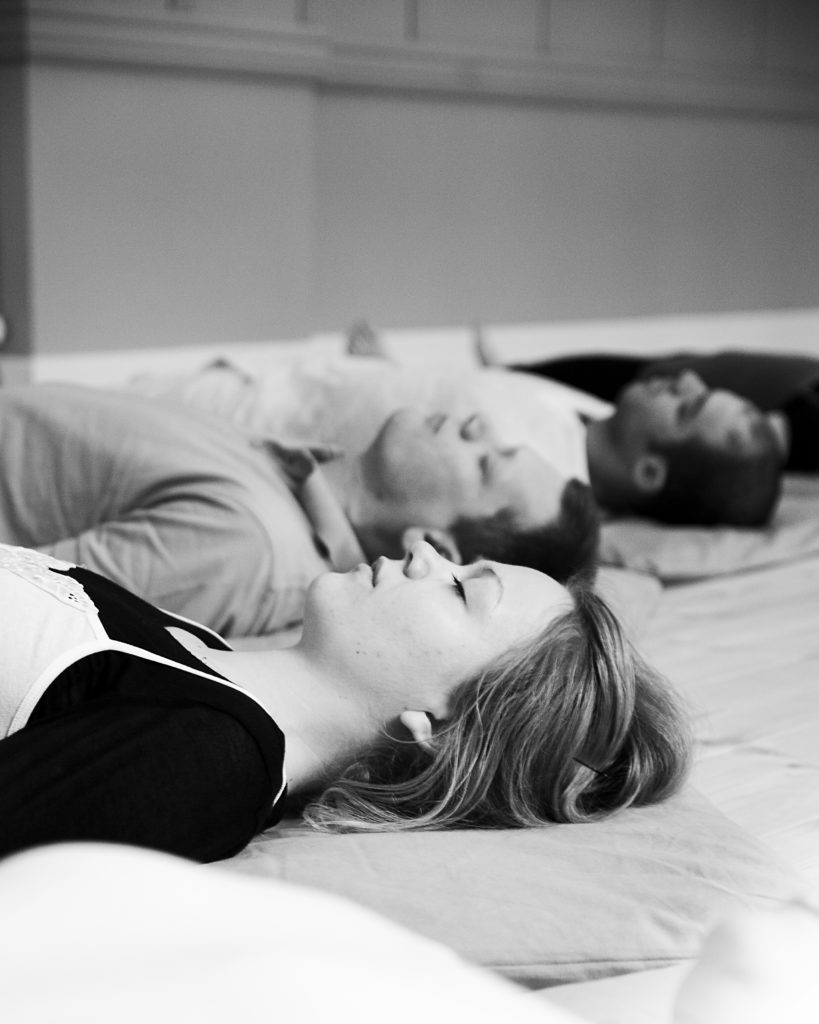
How to do the Shavasana step by step
A step by step guide on how to do the corpse pose doesn’t need to be exhaustingly long.
- Lie down on your back.
- Make sure to keep your spine straight and your neck aligned with it. Also, assure yourself that your nose is pointing straight up.
- Place your arms alongside your body with a slight distance from your torso.
- Pay attention to how you place your hands. The vast majority of us are more comfortable with palms facing upwards. But should you find that you like placing your palms down better, then do so.
- As for your legs, keep them a bit apart and let your feet drop slightly to the sides.
Do yourself a favour and learn how to get into the dead still pose swiftly, without wasting time or disturbing your state of mind with unnecessary movements. Knowing how to do this is particularly beneficial when you practise Shavasana within a programme of yoga poses.
Variations of the corpse pose
Variation one
You might prefer to extend your arms further from the sides of your body, and that is fine. However, in a yoga class, there might not be space for it. And if your arms end up outside of your mat on the floor, it might get uncomfortable.
Variation two
If you suffer from lower back pain, the corpse pose can be made more comfortable by placing a rolled-up blanket under your knees. Pregnant women will find this helpful too.
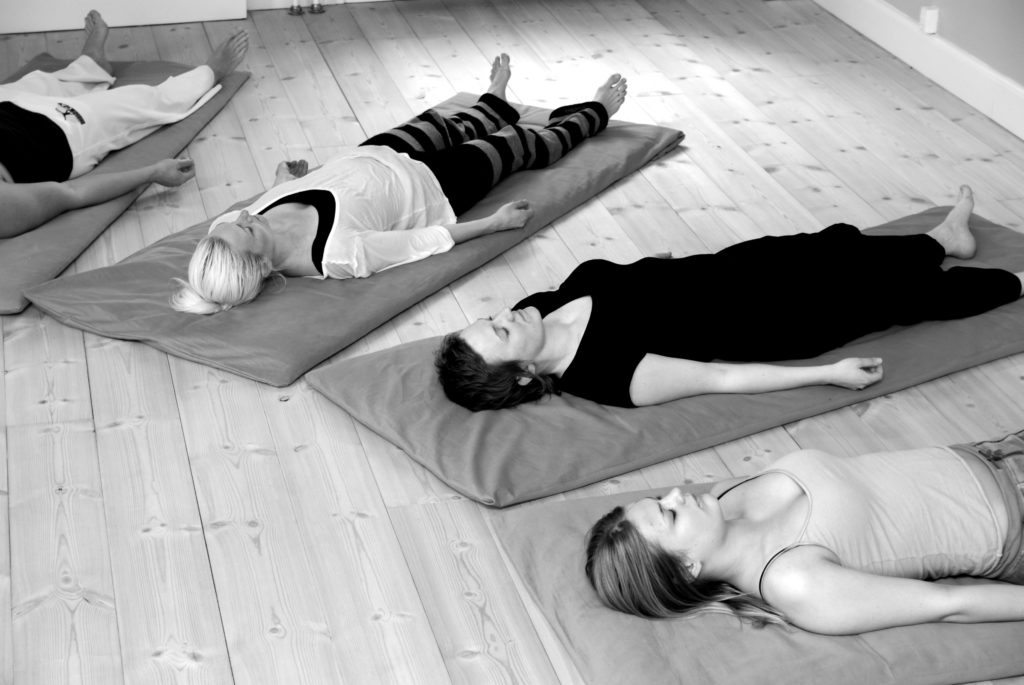
Best yoga mats for Shavasana
The thin latex yoga mats you find in nearly every yoga studio worldwide are great for standing yoga poses. They are not fantastic for lying down poses on the flip side, especially not the thinner ones. If you spend more than five minutes lying in the corpse pose, you will benefit from placing a blanket on top of your mat.
I use a futon yoga mat for my practice. That is what we employ in the studios and centres I teach in too. A futon mat is perfect for static yoga poses, such as the dead still pose.
When to do Shavasana
Dead still is versatile, having four primary functions:
- At the beginning of a sequence of yoga poses
- Between groups of yoga poses in a sequence
- At the end of a series of yoga poses
- As a meditation pose
Let’s look at these different uses one by one.
Shavasana at the beginning of an asana sequence
Starting your yoga practice by lying still in Shavasana for five minutes is excellent. By taking some time to settle in and calm down, you set the tone for your postural practice. It helps you mark the transition from your everyday activity to yoga practice.
Shavasana between groups of yoga poses
If you consider your physical yoga practice as something other than physical training, you need to include Shavasana. It would be best if you had Shavasana inserted between groups of poses. The dead still pose will then ensure that the effects of your primary poses settle down. In a well crafted postural sequence, Shavasana will feel natural. You will not need much training before immobility, and relaxation will come by itself. The energy released by your practice will carry you into it. Even most neophytes find it easy to lie still under such circumstances.
Using Shavasana in combination with other poses is what I consider to be its most crucial function.
The dead still pose at the end of a series of poses
Shavasana is an excellent option as a final pose at the end of a sequence. That is its primary usage within many modern yoga styles. However, there are other options that work just as well. In some cases, the final corpse pose is the only practice that comes close to meditation during the whole class. And unfortunately, it is often not done right.
Bikram yoga classes are supposed to end with five minutes of Shavasana. When I took a ten-day Bikram discovery pass some ten years ago, it stunned me that the teachers would leave once they had invited the participants to lie down. In less than a minute, a considerable part of the group had left as well. Only a handful of people would stay for the full duration of Shavasana.
I stayed on and enjoyed it very much. The subtle effect of that high-intensity physical yoga practice comes forth only when you quiet down. Many of those Bikram practitioners don’t know what they are missing.
Shavasana as meditation pose
The final way to use the dead man pose is for meditation. For example, Yoga Nidra is a meditative deep-relaxation that makes use of it. Another meditation that you do in Shavasana is Prana Vidya.
Furthermore, by adding a couple of simple mental instructions to the dead still pose, it can become a simple yet powerful relaxation technique. It is so good that this article would be incomplete if I don’t describe it in detail.
How to use Shavasana as a stand-alone relaxation
Get into the pose and make sure you will be able to stay comfortable for ten minutes. Add a blanket on your yoga mat if it is a thin one, and be sure to wear enough clothes. Lying still might make your body temperature drop. Finally, set an alarm to ten minutes.
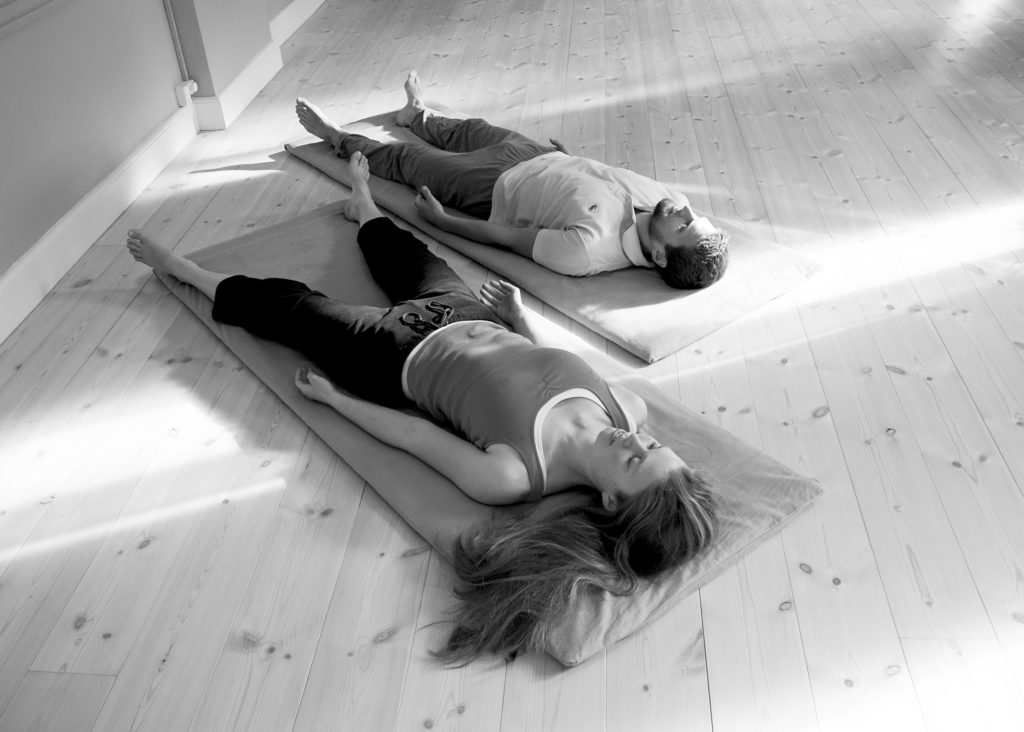
Instructions:
1. Feel your body
Allow your body to settle into the pose. Decide to remain still throughout the practice. Then become aware of your body. Feel your entire body lying down on the floor, all of it at the same time. Should there be discomfort or restlessness, acknowledge it. Don’t push that feeling away, but don’t react to it either.
Go on sensing your body for a few minutes.
2. Feel the motionlessness
Then shift your focus and notice motionlessness. Feel that your body is lying perfectly still. Keep feeling the stillness and go on doing so for several minutes.
3. Return to your body and motionlessness
As the practice deepens your state, your thoughts will likely drift off at times, perhaps often. That is normal. All you need to do is to bring your attention back to your body and the stillness. Keep doing this until the alarm goes off.
There you have it. A super relaxation technique that you can practice at any time (as long as you have digested your last meal). If you are struggling with Shavasana I challenge you to do it every day for ten days. You will see that it is going to change your attitude towards yoga.
Common mistakes with Shavasana
The most common mistake modern yoga practitioners are making with Shavasana is not doing it enough. Not only is it insufficiently employed during asana practice. In addition, when used as a final relaxation, it is often too short.
Another mistake is trying to relax. You don’t need to relax in the dead still pose. Relaxation will come by itself either from the release of energy thanks to previous yoga poses or simply thanks to the motionlessness itself.
My subsequent complaint is that some teachers overcomplicate Shavasana by adding elaborate mental instructions. I like to keep things distinct and clear; that is why I prefer to keep it super simple. I save complicated instructions for Yoga Nidra and other meditations.
The final misconception is that the corpse pose is the best ending to your yoga class. But hold on there, you might think! Did you not just write that Shavasana is a perfect way to end a sequence of yoga poses? I did, and I am not taking that back. What I mean is that you should not stop with yoga poses. Consider poses the warmup and end with pranayama instead.
Key takeaways
Shavasana is a crucial yoga pose that within many yoga styles is not used to its full potential. The easiest way to discover Shavasana is to use it as a resting pose between groups of yoga poses.
Its most critical benefit is that it regulates and harmonises the energy released by other yoga poses.
Despite its usefulness, Shavasana is not the ideal ending for a yoga class. You will get much more powerful effects with pranayama.
